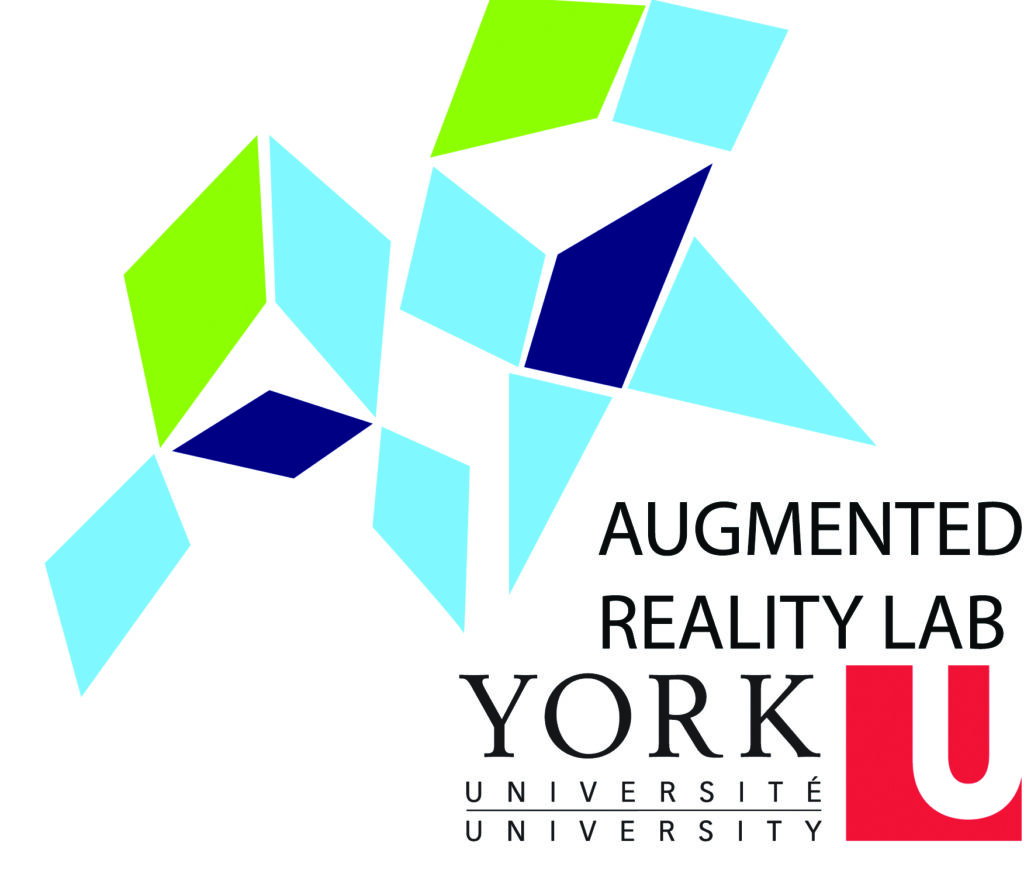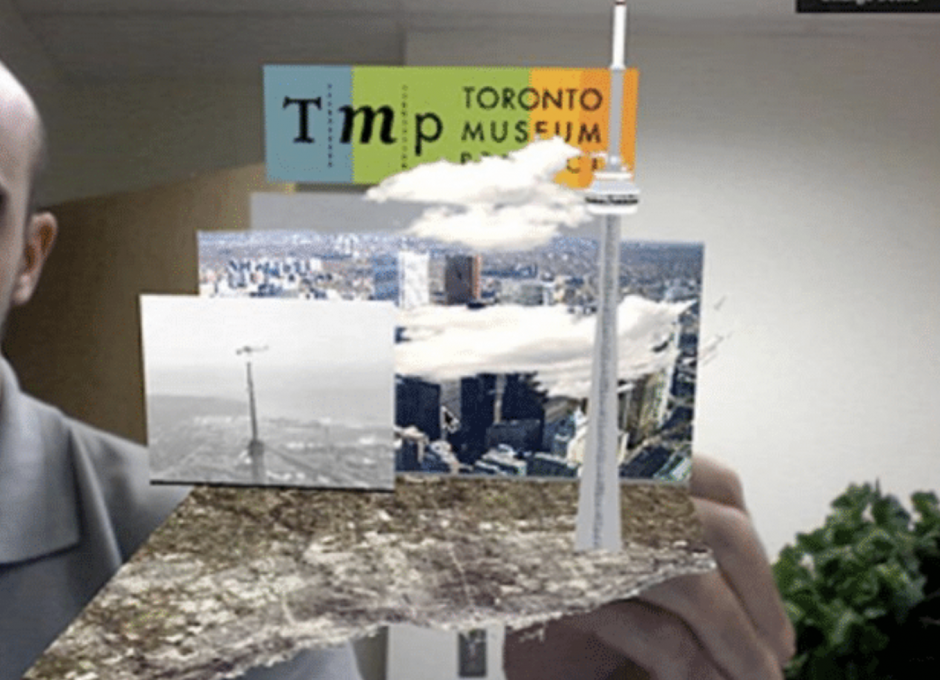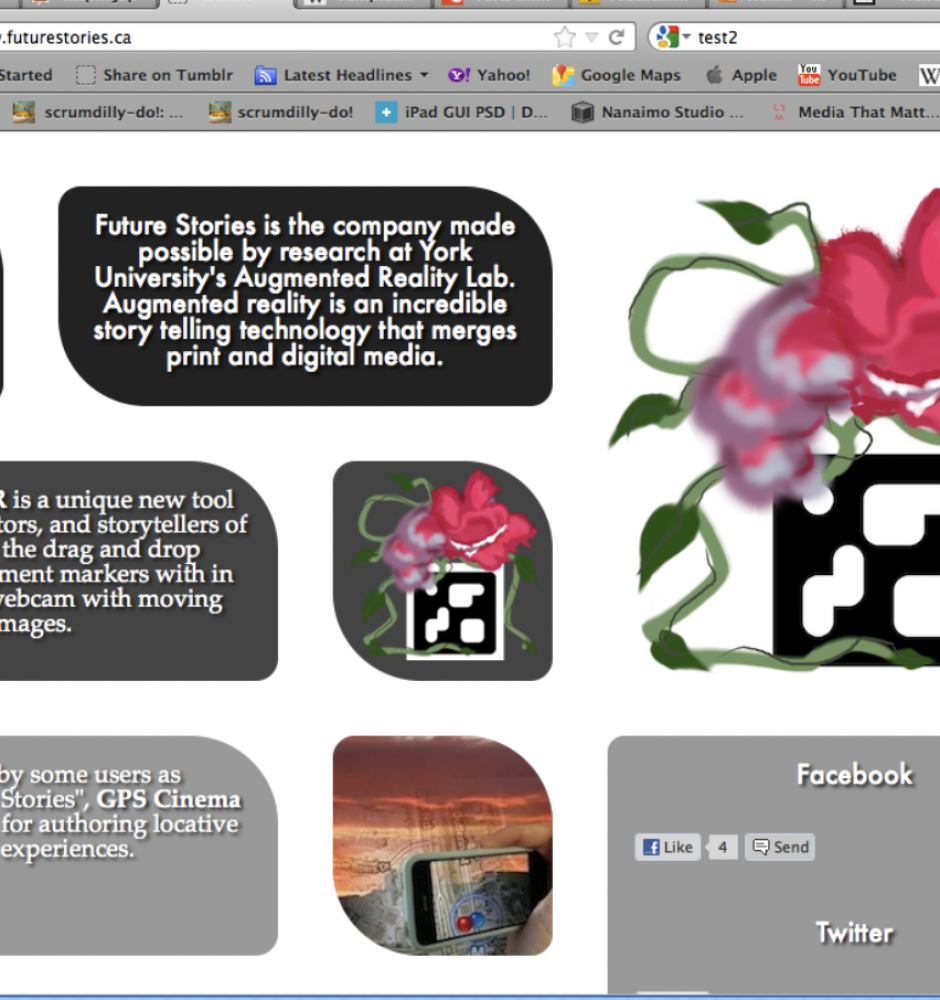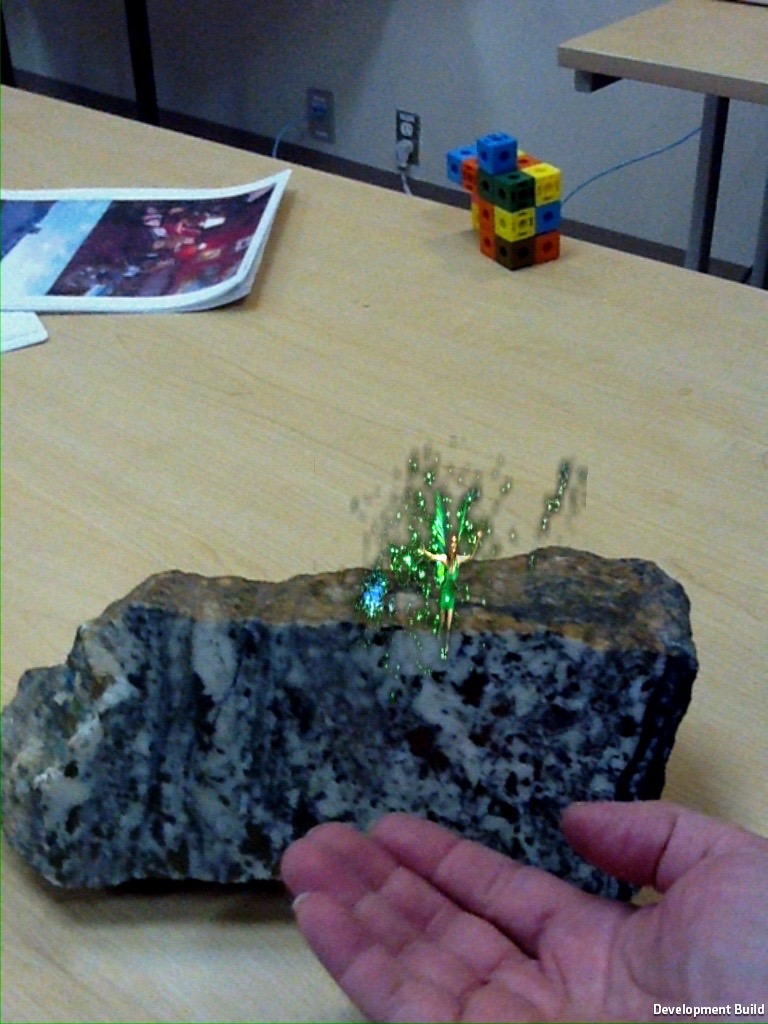
Lab Early Work


Handheld City - 2010
Handheld City was an online streaming experience developed by the AR Lab for the city of Toronto’s virtual museum project, which launched March 6 (Toronto’s 176th birthday). Using AR as a storytelling device, we organized and animated digital objects in the museum collection and created an interesting way to interact with the objects and access the accompanying text. We extended the project by making the basic architecture, allowing the general public to download open-sourcecode and make their own handheld cities.
AR Pop-up Books
The Augmented Reality Popup Tunnel Books, made by the Augmented Reality Lab at York University, part of a larger research project that puts stories and the tools to build those stories into the hands of a wide and varied audience of artists and educators alike. Augmented reality technology allows pre-selected real documents and items to be recognized by a webcam and composited or “augmented” with digital information such as video and sounds. Users of these projects are encouraged to explore the historical and educational material from online archives by viewing augmented documents reflected in their computer screens. Those wishing to share their own stories can download and reuse the project files which are based entirely on and open-source technology.
Handheld City is an online streaming experience developed by the AR Lab for the city of Toronto’s virtual museum project, which launched March 6 (Toronto’s 176th birthday). Using AR as a storytelling device, the researchers organized and animated the digital objects in the museum collection and created an interesting way to interact with the objects and access the accompanying text.
The Ontario Science Centre’s !dea Gallery showcased the work of the artist Helen Papagiannis, a senior researcher at the Augmented Reality Lab at York University. To encourage visitors to be actively engaged with the technology that inspired her work, the Magic Tunnel Popup Book was created with four scenes by award winning author Caitlin Fisher, new media artist Andrew Roth, and Papagiannis herself.

Snapdragon 2007-2014
Lead interface development: Andrew Roth
Lead programmer: Andrei Rotenstein
Tracker library: Mark Fiala
SnapDragonAR was a tool for artists, educators, and storytellers of all ages. We wanted to build expressive tools for non-programmers so we generated a wish list that prioritized easy buy-in, drag and drop, scaleability, high resolution 2D, and extremely low cost. In 2007 it was among the first AR tools created to enable non-programmers to make work in augmented reality. The software was commercialized and sold and actively promoted over a four year period before being purchased, in 2014 by Millennium Three Technologies
